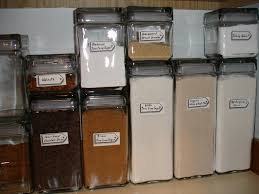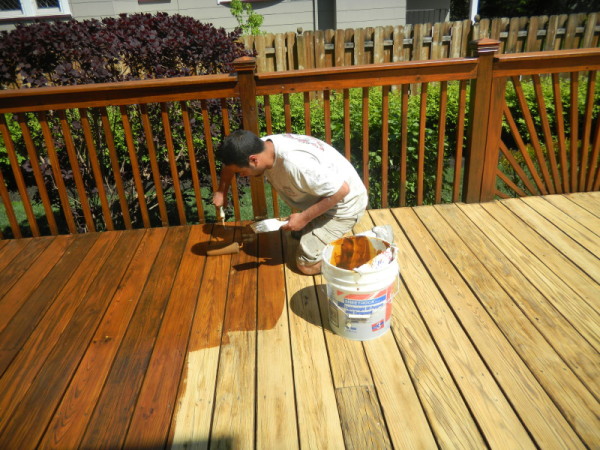
Moving is often a stressful time and having to find a place to live under time and distance constraints can be very difficult. Not everyone has the time or ability to travel to their new destination ahead of time to vet all of the properties and find the perfect place to live. This is when online tools can help you find a budget-friendly home, with all the amenities you are seeking, in a quick and easy manner.
Check out these 7 online resources that can help you check neighborhood crime levels, school ratings, income levels, native languages, and other safety statistics to find the perfect place for you and your family.
-
This informative site lets you search by city or by zip code for statistics regarding rent
prices, income levels, taxes, locations under home loans or refinancing, and even
demographics of occupants in that area.
-
Moving with school-aged children? This site allows you to find schools, read
reviews, and compare them with other schools in the area. Find the best school
district and the most accommodating school to fit your educational needs.
-
City Data has collected data and created profiles for larger cities within the United States.
On this site you can view crime rates of neighborhoods by zip code, tax assessment,
schools, restaurants, and even weather patterns of your new location.
-
True to its name, scout out your desired neighborhood on an interactive map and get
incredible statistics regarding average home prices, age of homes, ancestry of occupants,
vacancy rates, native languages, average income levels of occupants, and even
occupations of those living in the area.

-
Be aware of what is going on and who is living in your neighborhood. Family Watchdog
allows you to search your neighborhood on an interactive map to locate registered sex
offenders, view their mugshot, and review their charges.
-
Find the best cities to live in America by comparing larger cities side by side for statistics
on cost of living, the average prices of homes, best schools and school districts, and crime
rates by zip code.
-
Worried about the cost of moving across country, or even across state? Redman Van
has a move calculator and offers free quotes to help you estimate the cost of your move.
Don’t let the stresses of moving interfere with a pleasant relocation. Utilize these 7 online tools to find the best cities to live in the U.S. that are affordable and a great fit for you and your family.

The process of finding and purchasing a home can be extremely stressful. It often takes months to complete, and your wallet can experience surprise hits from unexpected fees. Educate yourself on these 13 ways to save time, money, and stress when buying a home, so you can feel confident about your purchase on your closing date.
- Start Saving Early
Even if you think you are a year or two out from purchasing, start saving diligently now for
a down payment. Depending on the type of loan and cost of your house, you may need to
pay 20% of the home’s value up front as a down payment..
- Boost Your Credit Score
Always know your credit score and resolve any credit issues you may have before having
a mortgage company run your information. Things like old addresses or old credit cards
with balances you’ve forgotten could cause you to be rejected up front.
- Cut Out PMI
Another reason to have a large down payment and consider shopping for more affordable
houses is to help you avoid Private Mortgage Insurance (PMI). You’re often required to
pay between .5% and 1% of your loan amount for PMI when you borrow more than 80%
of the value of your home.
- Shop Around for Mortgage Rates
You wouldn’t just buy the first house you see, so don’t sign the first mortgage loan
offer you get without shopping around. Explore different loan options, rates, and even
different mortgage companies to ensure you’re getting the best rate.
- Shop Around for Homeowner’s Insurance
Same with mortgage lenders, insurance companies can offer different rates for your
homeowner’s insurance. Make sure to share any jobs, degrees, or certifications you have
with them to allow them to search for the most discounts possible. Consider
bundling auto and homeowner’s insurance to save you money as well.

- Just Because You Were Approved For It Doesn’t Mean You Need It
Mortgage lenders make sure to give you the highest offer they can because they stand to
gain the most in interest the longer your loan is and the higher the amount. It can be
tempting to shop at the top of your budget, but homes in that price range may mean
cutting your monthly budget as tight as it can get.
- Inspection
Not only should you walk with the inspector and ask plenty of questions, but you need to
inspect your potential purchase yourself for glaring issues that may be a future concern.
Things to look for are:
- Damp, musty areas that may accumulate mold
- Check appliances such as the furnace or hot water heater to ensure they won’t need to be replaced immediately
- Look at the ceiling for leaks or cracks
- Look under rugs for hidden stains
- Look for efficiency issues around windows and doors.
- Build Emergency Fund
You may think the biggest expense is out of the way once you move into your new home,
but once you become a homeowner you may find monthly expenses from unexpected
repairs and utilities increased. Begin putting $50-$100 in an emergency fund every month
for unexpected costs.
- Be Aware of Hidden Fees/Expenses
Make sure you are aware of any extra lender, inspection, or closing fees not being
calculated into your required down payment. An online mortgage calculator may give
you an affordable rate, but it may not be calculating costs like insurance, PMI, and
property taxes. Lenders may even have required appraisal or recording fees that
add up.
- Hire an Affordable Mover
Not everyone has available friends for moving or access to a truck, and the process of
packing all your belongings and moving them yourself is incredibly stressful. Consider
hiring a professional, affordable mover to handle all the heavy lifting and save you
time and effort. For moving and storage needs in the Salt Lake City Area, check out
Redman Van & Storage Co.
- Consider Auction Properties
Some foreclosed homes end up being sold for auction with steep price cuts. If you
aren’t afraid of an older home that may need a little work for a good price, consider
finding a home at auction. Always be sure to research each property and get them
inspected before purchasing consideration.

- Don’t Be Afraid of Elbow Grease
Some homes with cosmetic issues may have a much lower purchasing price. Don’t
eliminate homes based on a lower price or from bad pictures. Check out each property
because an older home in a great location may just need some basic cleaning and fixing
up.
- Extra Payments
Any big one-time payments you can make on your home loan or any extra you can pay
each month can save you so much money in the long run. Consider putting $50 extra a
month towards your loan or putting your tax refund directly back to your loan.
Limit effort and decrease your stress levels by following these tips to save as much as possible when buying a home. If the purchase is over and now you’re faced with the daunting task of packing and moving, learn more about options and prices from the experts at Redman Van & Storage.

Is your moving date rapidly approaching and your house is still a mess? With these 10 tips, you can deep clean your house in less than 24 hours.
- Clean stains from your microfiber couch: Pour rubbing alcohol into a spray bottle and saturate the stained areas. Use a white sponge to scrub the rubbing alcohol into the stain and wait for the couch to dry completely. Once dry, gently soften the clean areas by using a white bristle brush in a circular motion.
- Rid fans of dust: One by one, slide fan blades into an old pillowcase and wipe clean. This prevents the dust from falling onto your floors and creating more of a mess.
- Clean your oven: Combine baking soda, a few drops of vinegar, Dawn dish soap, and lemon juice. Wipe the mixture over the entire inside of your oven, including racks, and let sit for at least 2 hours. When ready, use a clean paper towel to remove nasty grime.
- Spring clean your doors: Remove hand prints, scuffs, and dirt by running a warm, wet washcloth over the exterior and interior of your door. Pay special attention to areas around the doorknob, door frame, and threshold. Use all-purpose cleaner if necessary.
- Clean baseboards: Use a dust broom to remove surface dust. Add a few drops of dish soap in a bucket of warm water and use a sponge or rag to deep clean dirt. When clean and dry, wipe with a dryer sheet to repel future dust.
- De-gunk your showerhead: Combine a cup of vinegar (or more depending on size of showerhead) and 3-4 drops of lemon essential oil in a Ziplock sandwich bag. Submerge your showerhead in the bag and gather the excess bag together at the top of the shower head. Use an elastic hair tie or heavy-duty rubber band to secure the bag and hold it in place. Let it sit for 5-8 hours. Remove and wipe clean with microfiber cloth.
- Dust off lampshades and pillows: Use a lint roller to remove dust and pet hair from pillows and lampshades.
- Rid deep carpet stains: Spray stain with 1-part vinegar, 2-part water solution. Lay a damp rag over the area and iron on the steam setting for 30 seconds. Repeat for stubborn stains.
- Clean your blinds: Mix equal parts water and vinegar in a bowl. Slip an old sock on your hand, dip it into the mixture and wipe down each individual slat on your blinds. Re-dip after every 2-3 blinds.
- Wash your AC vents: Remove vents and wash thoroughly in a sink of soapy water. After the vents have dried completely, liberally apply wax (car wax works great) to both the inside and surface of the vent. Buff off the wax and replace on vent.
Relax on Moving Day – We’ll Take it From Here
While you’re cleaning your house, let Redman Van worry about the move. With over 100 years of experience in the residential and commercial moving and storage industry, Redman Van knows just what it takes to ensure your move goes as smoothly as possible. Contact us today for more information or to schedule an appointment.

Just the idea of moving can be overwhelming, but packing up and actually doing it is a totally different beast. Between carefully storing your belongings, making sure boxes stay organized, and properly loading the moving truck, moving can be an incredibly stressful ordeal. Thankfully, it doesn’t have to be.
With this week-by-week checklist, you can cross off to-do’s as you go and make this move as simple and stress-free as possible.
Eight Weeks Out
- Research your moving options. Should you hire movers to reduce the stress of a long distance move? Do you have friends who could pitch in and help with the duties of a local move?
- Get organized by making a moving folder or binder. Use this to keep all of your move-related paperwork in order and be sure to include a notebook with all of your notes, reminders, ideas, etc.
- Set a moving budget. Without knowing how much you can afford to spend on this venture, you’ll find yourself breaking the bank. Take note of everything you’ll need to consider for the move and set a budget to help keep that list in line.
Four Weeks Out
- Change your address. Though the move might still be a month away, changing your address weeks in advance will let friends and family know about your move, and you can manage any important business correspondence or subscriptions you might have.
- Start sorting. What are you going to keep? What can be donated? Are some things better off in the garbage? Remember the space you’ll have in your new home and try to manage your belongings accordingly.
- Order moving supplies. Now is the perfect time to start purchasing, borrowing, or renting the moving essentials like boxes, colored labels, packaging tape, bubble wrap or newspaper, etc.
- Take care of important family matters: Get copies of your family’s medical records and notify your children’s schools of the upcoming move. Remember to get copies of school records, too, and check into the enrollment process at your child’s future school.
Two Weeks Out
- Start packing. Box up everything you have left in your house and be vigilant about properly labeling such boxes.
- Make arrangements for you to get your pets, plants, and automobiles to your new home.
- Transfer your current homeowners insurance policy to your new home and formally change your address on the USPS website.
- If needed, arrange for a cleaning service to clean your new home before you and your belongings begin to arrive.
One Week Out
- Confirm with your moving company – or friends and family – the time and date of your move.
- Pack an essential kit with items that you’ll need immediately at your new home. Be sure to include your important moving binder, and make sure this kit stays with you and is not put in the moving truck.
The Day Of
- Work with your movers when packing the truck. Coordinate and answer questions, identify valuables or fragile items, and verify that everything is loaded properly.
- Before the moving van pulls away, make sure you do one final sweep in your home to make sure you didn’t leave anything behind.
For peace of mind and professional assistance with your move, contact Redman Van, today.

Getting ready to move? Redman Van has put together a list of moving tips and tricks that will make your move seem a whole lot easier!
1. Pack an overnight bag.
Moving is a pretty big ordeal, and chances are you’re going to be totally exhausted by the time you arrive to your new place. With an overnight bag in hand, you’ll have all the essentials to get you through the next day or two before unpacking totally takes over your life.
2. Pack items you’ll want right away in a clear bin.
There are definitely a few items that you’ll want right away, and putting them in a clear bin will make them much easier to find in a sea of cardboard boxes. Toilet paper, paper towels, trash bags, power strips, phone chargers, tools, etc. are all items you’ll want first thing.
3. Pack plates vertically.
Packing plates vertically like records with padding between each plate will make them less likely to break.
4. Have sandwich bags at the ready for any small parts.
You’ll surely have screws, nails, and other hardware from various items throughout your home, so just put them all in individual sandwich bags. Label each bag with a marker and tape the bags to their corresponding items. NOTE: This is also a great way to move all the cords from electronics, though you’ll likely need the bigger gallon-size bags.
5. Make sure everything is packed before movers arrive.
Be ready! Nobody wants to wait around while you finish packing—it’s a waste of your mover’s time and totally inconsiderate on your part.
6. Take time to label your boxes as you pack them.
Having an organized method of packing will make unpacking that much easier. Label your boxes carefully—indicate what is in them and where they need to go at your new place. (Don’t forget to mark things that are fragile!) Unloading will go much smoother and faster with much less confusion.
7. Unpack by room.
It is much less stressful if you unpack by room. The whole process will feel much more manageable, and you’ll feel like you’ve accomplished something when each room is finished.
8. Change your address two weeks before moving.
Doing this before your move will ensure nothing is missed when it comes to important things like utilities and other bills—or to ensure your favorite magazine arrives and is there when you need a break from unpacking.
9. Make your last grocery trip two weeks before moving too.
You don’t want to have to throw out food, so use up what you have before moving.
10. Have furniture disassembled and appliances unplugged.
Defrosting your fridge on moving day is always a bad idea and will leave you with a wet mess. Get your fridge and other appliances ready the day before moving, and make sure to disassemble any furniture or other large items to help moving day go as smoothly as possible.
For more help with your move, give Redman Van a call or contact us today!

There is no reason to pack more things than needed. Save yourself some work and gain space in your moving truck when you clean out your home and leave these six items behind when you move.
1- Items to Sell or Donate
Donating items that you no longer need is a great way to whittle down how much you have to pack up, move, and unpack. Consider donating the following items:
- Clothes that haven’t been worn in over a year
- Outdated computers, dvd players, and other electronic equipment
- Furniture that you don’t want in your new place
- Older washers and dryers
- House decorations
- Bedding
If you want to make some money that can go toward moving costs or new furniture when you get to your new residence, hold a physical or online garage sale.
2- Bird Houses and Bird Baths
Birds will have become accustomed to the bird houses, bird feeders, and bird baths that are found in your yard. Leave those behind so they can continue to be enjoyed.
3- Paint, Fertilizer, and Insecticides
Leave partially used paint cans and wood stains so that they can be used for future touchups in the house.
Poisons can be hazardous to transport so leave those to be used at the property or dispose of them safely.
4- Old Paperwork
Go through your files and shred any old or outdated paperwork. If you think you might need something later, take a picture of it or scan it into your computer.
Always keep your birth certificates, social security cards, marriage license, and tax records from the last two to seven years.
5- Manuals, Warranties, and Blueprints
Usually, large household appliances are left behind in a move. Leave the manuals that belong to them along with any warranty information if they are still in effect.
If you built your home, leaving the blueprints for the future homeowners is a nice gesture and might come in handy for them down the road.
It’s also nice to leave behind a helpful note regarding any of your house’s quirks. Does the thermostat read a little high? Does the basement door stick? The new residents will appreciate knowing these small things up front.
For extra credit, you can write down a list of school information, neighborhood/HOA contacts, your favorite restaurants, and anything else you think would be helpful.
6- Keys and Garage Door Openers
It might seem obvious to leave the house keys and garage door openers, but it’s easy to forget in the middle of all the moving chaos.
Also don’t forget to leave keys to interior doors, gates, and mailboxes as well.
For help with packing and moving, visit Redman Van & Storage Co. to request a full service moving quote.

Each year, over 40 million people move to a new home; more than 23 million move within the same county, close to eight million move to a different county within the same state, 7.5 million move to a different state, and well over 1.2 million will move to a different country. Perhaps this year, you and your family will join the growing number of Americans uprooting their lives to begin a new chapter within the walls of a new home.
While the thought of moving can be exciting, when it comes to packing up your home, things can get a bit challenging. Between transporting boxes full of possessions, different pieces of furniture and more, moving can end up being much more disorganized than initially planned. However, with these three tips and the help of Redman Van, you can make your moving experience a beautifully organized breeze.
1. LOTS of Labels
When it comes to moving, you can never have too many labels. Forget about using markers or color-coded pens to scratch “misc.” on dozens of boxes; this will only add to frustration. Instead, create computer-generated labels – and hundreds of them.
Pick up a large box of cheap labels at your local supply store, load them into your printer, create a document with a label for every room in your house, and let the printer do the rest. These labels should include rooms such as:
- Kitchen
- Living Room
- TV Room
- Master Bedroom
- Girls Room
- Boys Room
- Bathroom
- Laundry Room
- Garage
- Storage, etc.
Experts recommend printing about one hundred labels per-room, then place a label in the corner of all four sides of the boxes. While this may seem like overkill, your future-self will thank your past-self when it comes time to search for and unpack the boxes.
2. Keep A Handy Dandy Notebook
This notebook will be the center of your universe, so make sure it has plenty of free space, big pages, and even inside pockets. With the help of this notebook, you can adequately keep track of all the moving parts involved with a move. In this notebook, you will include:
- House hunting information: Realtor phone numbers, notes on houses you’ve toured, handymen recommendations, movers, They can all be included in a dedicated section.
- Ideas for your future home: Paint chips, flooring samples, wallpaper snippets, fabric swatches, etc. can all be kept in the pockets for future decorating ideas in your new home.
- Scheduled appointments: Use your notebook to keep track of appointments or special dates for your move – i.e., “movers are coming,” “cable installation,” “plumbing specialist,” etc.
- Keep track of boxes: Remember all those labels you printed out? Keep notes on specific contents of each box. This will make it easy to find plates, sheets, etc.
3. Pack A Last Minute “Essentials Box”
This “essentials box” is one of the most important things you can do during a move. After the rest of your house is packed, create a box that has all of the things you’ll absolutely need in your new house before all the unpacking beings. This box can contain things like the coffee maker, your child’s special toy, a set of bed sheets, blankets, pillows, alarm clocks, and more. Decorate or mark this box differently from the others so that you and the movers know it goes in the truck last and comes out of the truck first.
With these simple tips, moving won’t be such a big deal. Take an even bigger load off with the help of Redman Van, Utah’s most trusted moving and storage company. Call us today to learn how we can help!

The severe winter months can be hard on your home. Between freezing temperatures, harsh winds, ice and snow, both the exterior and interior of your house takes a beating. By creating a winter maintenance checklist, you can properly preserve your home for years to come by retaining the house’s value and protecting your investment. Whatever your checklist may include, be sure these four essential maintenance tips are at the top.
- Take care of your heating system, both before and throughout the winter months. Prior to warming your house all winter, give your heater some TLC to extend the system’s life and tackle any potential issues. Hire a licensed contractor to service your furnace or boiler to ensure it’s in proper working order and will be able to operate problem-free throughout the winter. Also be sure to replace any filters throughout the heating system in your home.
Just as your furnace needs attention, so does your chimney. Consider having your chimney serviced around the same time as your furnace (at least once a year) to prevent the build up of creosote and other debris that could be a potential fire hazard during the winter.
Lastly, set your indoor thermostat to temperatures above 55 degrees. This will further insulate your water piping system and prevent any freezing. It will also provide an even, comfortable temperature throughout your home.
- Prevent ice dams from building up on your roof. Dams and icicles can be a huge hazard to your home during the winter. Meltwater that doesn’t drain properly creates a frozen wall that prevents proper run off of melted snow and ice. Have a home-energy auditor or weatherization contractor inspect your attic and repair anything that may become a problem down the road.
While you work to prevent ice dams and icicles from damaging your roof, consider maintaining other draining and plumbing issues, too. Be sure to have any old pipes checked by professionals to avoid the cracking, breaking and bursting of frozen pipes.
- Ensure your windows are in good condition. Faulty window insulation, poor sealants and other issues can make difficult (and expensive) to efficiently heat your home. Try hanging extra curtains or blinds to help keep the heat indoors. If your windows tend to fog up on the inside, this could be an indication that the sealant on your windows is deteriorating and you may want to consider window replacements in the near future.
Similarly, be sure other insulated areas of your house are in good condition. Check any exterior doors for drafts or air leaks and inspect insulation to be sure it has not been damaged by years of weather or pest infestation. These flaws can put addition strain on your heating system as it will have to work harder to maintain a comfortable temperature.
- Ensure You Have Proper Winter Supplies and Equipment. Don’t be caught unprepared by the season’s first storm. Be sure your summer equipment is properly stored and your winter gear is up to par. Consider draining sprinkler systems, storing hoses and cleaning gutters, and prepare equipment like snow blowers, generators, shovels and back-up heaters to ensure they all work properly. This will prevent you from being caught unprepared during harsh winter storms.
By keeping your home properly maintained over the winter months, you can maintain and even increase the value of your home. That way, you won’t lose money on your investment when it comes time to sell your home. Visit Redman Van for more about home maintenance tips and moving assistance, today.

Between 2012 and 2014, more than 35.9 million living in the United States moved to a different residency – that’s nearly 12 percent of the nation’s population. While employment, family and housing were the leading causes of people making the move, it’s clear that the economic health of our country plays a major role in making people pull up their roots and plant them somewhere new.
These major categories, however, shouldn’t be the only reason you’re questioning a move – several other factors might indicate that the time is right for you to make a move, too. Here are 8 telltale signs that you could be ready:
- Overgrown Home
Are you tired of sharing one bathroom sink with all of your family members? Moving to a larger home can accommodate a growing family and give everyone the space they need.
- Flown the Coop
Are there too many open rooms in your home? Have your kids grown and fled the coop? Downsizing to a smaller home could not only save you money, but make you money, too.
- Worn out by Weather
Ready for more sunshiny days? Perhaps your longing for a location with varying seasons. Many people decide to move because of the weather or climate.
- Remodel Headache
Owning a home means that remodeling is inevitable – but what if there is just too much to remodel and not enough budget? Save yourself the headache and move to a home that has your wants and needs.
- The Relationship Reason
Trying to meet that special someone? Hoping to start over after a rocky relationship? Moving into a new house can be the ideal solution for starting fresh.
- Ready to Retire
Calling it quits on that job you’ve had for years? What do you want to do in your newfound free time – hike, bike, golf, sail, read, play tennis? Head to a land where all your retirement dreams can come true.
- Neighbor Nonsense
Is your neighborhood being overrun by noise, crime, construction or traffic? This is a great indicator that it might be time to sell and relocate -it’s not you, it’s them.
- Killer Commute
Do you feel like you’re spending too much time in the car going to-and-from work and not enough time at home? Ready to ride your bike or walk to work? Moving closer to your job can save you valuable time and money.
If you’ve settled the scores and decided that it’s time for you to make a move, let Redman Van help make your job easier.

If you’re planning on selling your home, there are a few simple things you can do to increase your homes value and improve its sales appeal. Keep reading to learn more.
1. Start Scrubbing
It is essential that your home is clean. Set aside a weekend to scrub every nook and cranny of your home. In some cases, it may be best to save yourself some time for other projects by hiring a professional cleaning service—a professional service will also have better tools and be better equipped to thoroughly clean your home.
2. Have Your Home Inspected
Hire an inspector to evaluate your home and look for problems. That way, you can make any repairs that would deter buyers.
3. Capitalize On Your Kitchen
If you can only afford to upgrade one area of your home, make it the kitchen. A nice, modern kitchen will attract buyers where an old, cramped kitchen could be a deal breaker. Even small changes can make a big difference—replace the light fixtures, faucets, and handles on the cabinets to make your kitchen more attractive.
4. Keep Things Neutral
Buyers want to be able to imagine themselves in a new home. While you may think one room is a perfect nursery, they may be looking for a room that can be used as a home office. Keep things as neutral as possible so buyers can envision themselves in a room. Use neutral colors on the walls and keep the decoration simple and impersonal.
5. Fix Up The Flooring
Most buyers aren’t looking for a home that will need all the flooring replaced a month after they move in. Make the most of the floorings you have by having them professionally cleaned. If the floorings are in really bad shape, it may be worth the cost of replacing them.
6. Upgrade Your Bathroom
A few simple updates in your bathroom can increase your home’s value. Replace the showerhead and faucets, re-caulk the tub, clean out the grout, and consider updating the cabinets.
7. Brighten Things Up
Make your home look happy and inviting by adding light. Repaint some of your rooms in light neutral colors, replace heavy drapes with easy to open shutters, and add extra light fixtures and ceiling fans in rooms without overhead lighting.
8. Keep Up Regular Maintenance
Simple maintenance will protect and improve the value of your home. Fix those leaky faucets, make sure your windows are still well insulated, and check your air filters.
9. Hire Someone To Decorate Or Stage Your House
If you need help making your home appealing to future buyers, consider hiring a professional to decorate or stage your home.
10. Don’t Forget About Curb Appeal
While improving the interior of your home is important, no one will even bother coming inside if the exterior of your home is unappealing. Trim your grass, plant some flowers, update your front door, sweep the walkways, weed the garden, and wash the exterior of your home to encourage buyers to come see what is inside.
Once you’ve increased the value of your home it will be easier to sell. When that time does come, you’ll need to move your belongings carefully to a new home. Hire a moving company to safely transport your furniture and possessions. Moving companies like Redman Van also provide storage services, which can come in handy during a move. Use the tips above to make selling your home and moving to a new place easier and more successful.

















